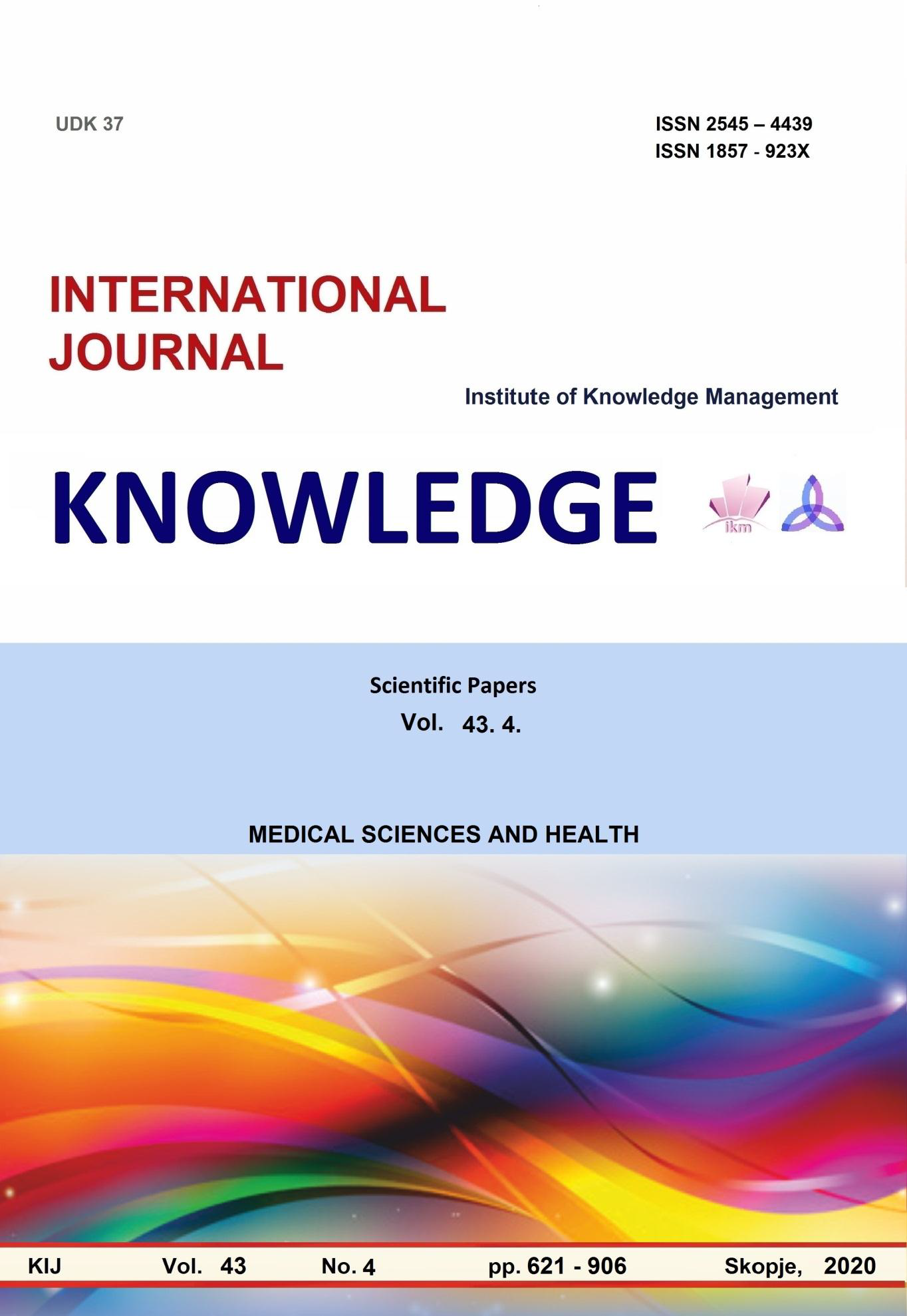ANATOMICAL JAW RESTORATION OF A CHILD WITHPLEUMORPHIC ADENOMA IN THE MAXILLA
ANATOMICAL JAW RESTORATION OF A CHILD WITHPLEUMORPHIC ADENOMA IN THE MAXILLA
Author(s): Ivan GerdzhikovSubject(s): Social Sciences
Published by: Scientific Institute of Management and Knowledge
Keywords: denture; maxillary resection; maxillary defect; obturator; pleomorphic adenoma
Summary/Abstract: Introduction: Literature review findings indicate a continuous increase in the frequency of tumors in the maxillo-facial area. An increase in the cases of malignant and benign tumors is reported with pleumorphic adenoma being the most common. A retrospective study for the 1942-2012 period shows that pleumorphic adenoma occurs in 44% of the cases of benign tumors in the oral cavity. Research results suggest that pleumorphic adenoma and malignant cancers of salivary glands tend to more frequently affect children and young people below the age of 18. Aim: The purpose of the article is to analyse the opportunities for conducting an anatomical jaw restoration of a child with pleumorphic adenoma of the upper jaw after resection and covering of the defect with muco-periosteal flap without bone base. Materials and methods: The study explores the prosthetics process of a 12-year-old girl with resection of a half of the upper jaw after which the border between oral and nasal cavities is composed of soft tissue only. As a consequence of the resection, 2/3 from the jaw and teeth from 21 to 17 were removed. The prosthetic recovery was extremely difficult because of the absence of a stable bone foundation and patient‘s age. The development of a partial denture was required, as well as using the opposite vestibular bone surface for its retention. The impressions of the both jaws were taken with alginate. The denture was created with heat cured acrylic resin after fixing the occlusion height, centric relations and a successful trial denture. Results: Prosthetics results showed a good retention and stability of the denture due to the inclusion of the complete vestibular surface of the preserved bone left side. It facilitated a successful restoration of feeding and speaking functions, despite the lack of a stable bone structure. The check-ups results demonstrated a smooth adaptation to the denture and an absence of decubitus ulcers. Conclusion: Prosthetic restoration of the oral cavity after a surgical intervention of oncological diseases is related to numerous difficulties and problems, especially among children. The process requires the development of modified dentures which comply with the age and specific circumstances of each clinical case. The number and localisation of preserved teeth, as well as the applied surgical technique for tumor removal have an important role for the success of the anatomical restoration of the jaw.
Journal: Knowledge - International Journal
- Issue Year: 43/2020
- Issue No: 4
- Page Range: 637-640
- Page Count: 4
- Language: English

